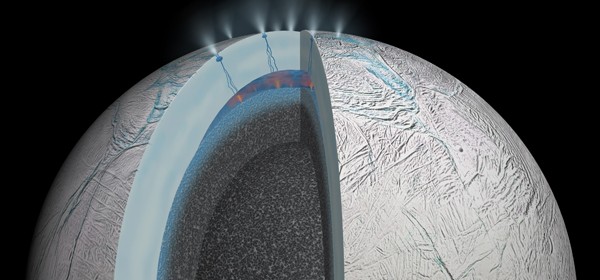A new water world

Saturn’s ice-covered moon Enceladus could harbor a warm-water ocean beneath its frozen surface, opening up new possibilities for life beyond Earth. Enceladus has fascinated astronomers since 2005, when NASA’s Cassini probe caught geysers on the moon’s south pole spewing out plumes of salty water. Water that is thought to have originated in an ocean buried beneath the moon’s 25-mile-thick ice crust. Now new study of Cassini data suggests that Enceladus has a hot, porous core that heats water on the seabed to at least 190 degrees. Similar conditions exist at volcanic hydro-thermal vents on the bottom of the Atlantic Ocean, where strange forms of life flourish far from the sun’s rays. Those hydro-thermal vents provide all the basic ingredients needed to host life: “energy, nutrients, and liquid water,” says study lead author Hsiang-Wen Hsu, a planetary scientist at the University of Colorado at Boulder. But Hsu cautions that while conditions on Enceladus might be hospitable to microbial life, that doesn’t guarantee the moon is home to such organisms. “We don’t know if the water was warm enough for long enough,” Hsu says. “ If the temperature wasn’t stable, life may not have happened there.”

 Print
Print